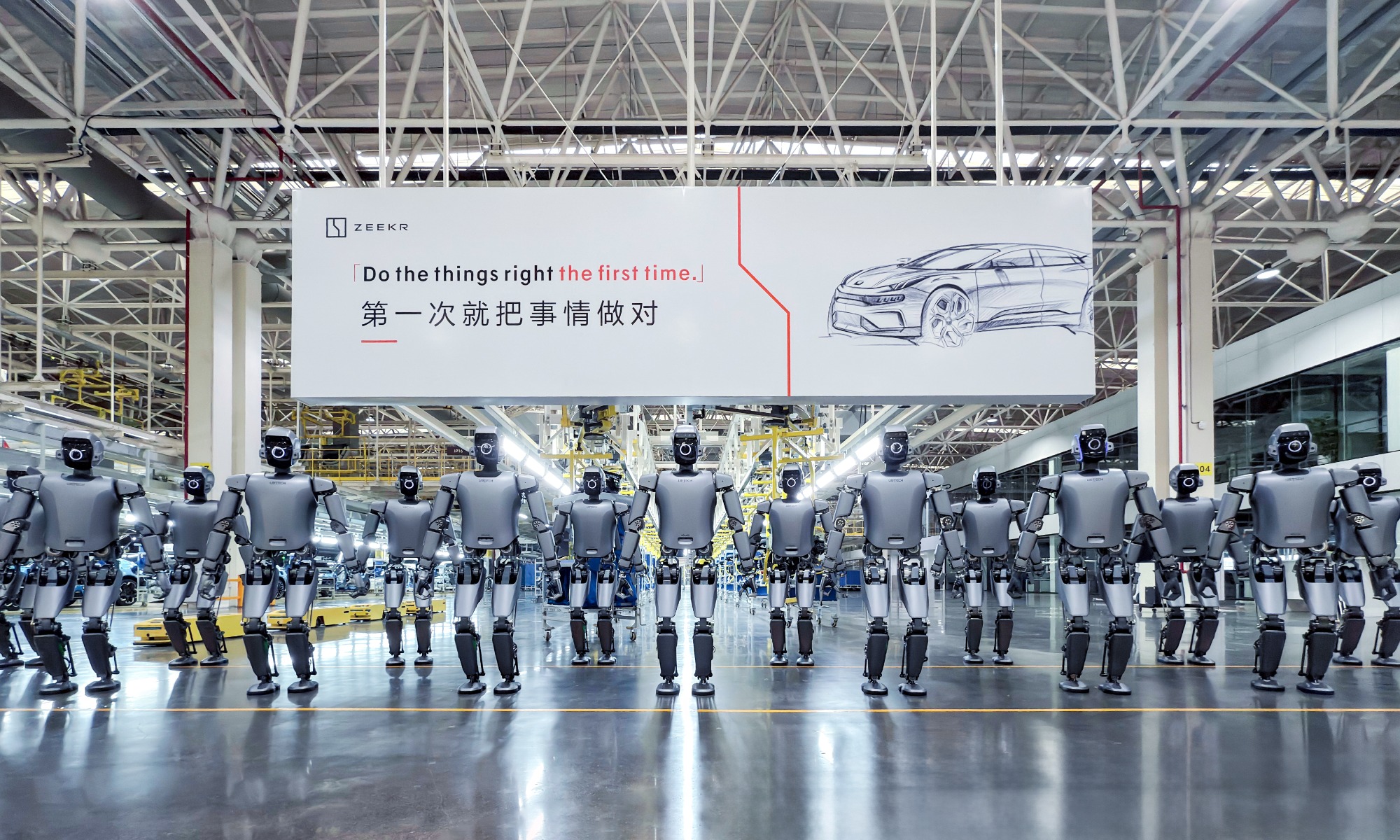
Economists' VIEW logo

On March 1, 2025, in Ningbo, East China's Zhejiang Province, Ubtech humanoid robots undergo multi-scenario, multi-task training at Zeekr's 5G-wired electric car factory, showcasing advanced industrial automation. Photo: VCG
China's GDP growth target of around 5 percent looks ambitious but it's not surprising that such a target is set, which reflects China's confidence and determination to maintain stability amid a complex international environment.
I'm sure that China can reach its goal through a series of policy measures, which will not only accelerate its own modernization but also create new opportunities for multinational companies.
In 2024, China's achievement of its pre-set GDP growth target of around 5 percent is hard-won, which reflects the country's success in navigating global headwinds. Resilience is the new motto for China's economic development.
This year, the country's two sessions highlight the development of new quality productive forces, particularly in areas like AI and robots. Innovation-driven productivity is what China needs, and productivity is driven by innovation, automation and globalization.
China's government deficit marked an increase of 1.6 trillion yuan ($220.16
billion) over last year's budget figure, which will provide more resources to support the economy and shield external shocks. Investment drives innovation, innovation generates productivity, which will raise the added value of goods and services produced in China. That's why AI+ strategy will empower the Chinese economy.
There are many sectors in China that investment is driving innovation and empowers Chinese companies on a par with global leaders - not only in volume but also in sophistication. There is one thing that Chinese companies are very good at - integrating and adopting new technologies in a speed much faster than anyone else.
In the past few years, the "new trio" from China - electric vehicles, lithium-ion batteries and photovoltaic products - replaced the "old trio" of clothing, household appliances and furniture to become important driving momentum of China's exports. It's expected the next generation of "new trio" will likely emerge within the next few years, for example, products related to energy transition, semiconductors and high-end manufacturing.
As China's high-tech product export capabilities continue to strengthen, the nation will transition from its role as the "global factory" to become a global leader in innovation in the world.
For multinational companies, this transformation of the Chinese economy provides ample opportunities in areas such as automation, machine tools, software and more. The emphasis on sustainable development aligns with global trends, creating prospects in renewable energy and green technologies.
Amid escalating global geopolitical and economic uncertainties - particularly the heightened unpredictability in US policy trajectories and economic performance - China has emerged as a stabilizer for multinational companies' business growth.
In recent years, China has stepped up effort to re-boost the confidence of foreign business and restated that foreign business would continue to play an important role in China's economy. This year's Government Work Report pledged that the country will remain steadfast in its commitment to opening-up despite external changes.
China is not only a manufacturing powerhouse, but also a global innovation powerhouse, leading the world in digitalization, sustainability and other high-tech industries.
Chinese market is simply too large to ignore - as a critical source of revenue and profitability. Moreover, the Chinese economy has demonstrated strong resilience in the context of rising complexity and unpredictability in the global market, providing a stable business environment for multinational companies.
There is still a large, untapped potential in China's consumption sector. Boosting consumption and making it a stable and sustainable contributor to China's economy is a long-term endeavor. It relies on the ongoing transformation of the economy. The focus has to be shifted from volume to value by raising productivity to generate more disposable income, which drives up confidence and public spending.
Profitability is crucial for companies. There is no quick fix. The policymakers and market participants must move past the old development narrative and embrace new growth model.
China boasts strong competitive edges. Despite intense market competition, multinational corporations cannot afford to miss the potential for gaining a larger market share. In the future, it is anticipated that sectors such as automotive manufacturing, bio-pharmaceuticals, and AI will attract multinational companies to position them in Chinese market.
Multinational companies operating in China need to optimize their business models and forge local partnerships while increasing investment in the market and leveraging China's innovation ecosystem to achieve better development.
The article is compiled based on an interview with Denis Depoux, global managing director of Roland Berger. bizopinion@globaltimes.com.cn





